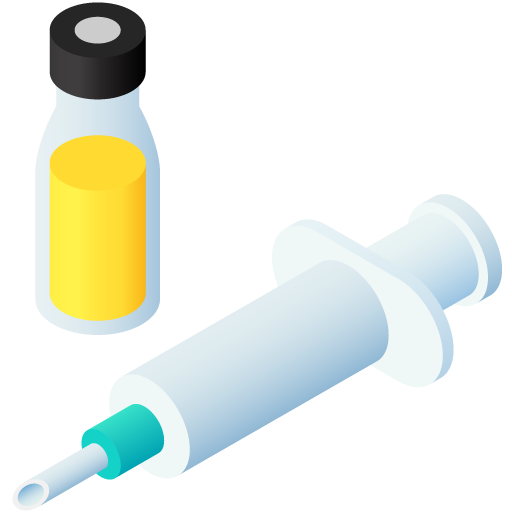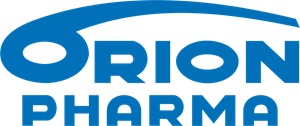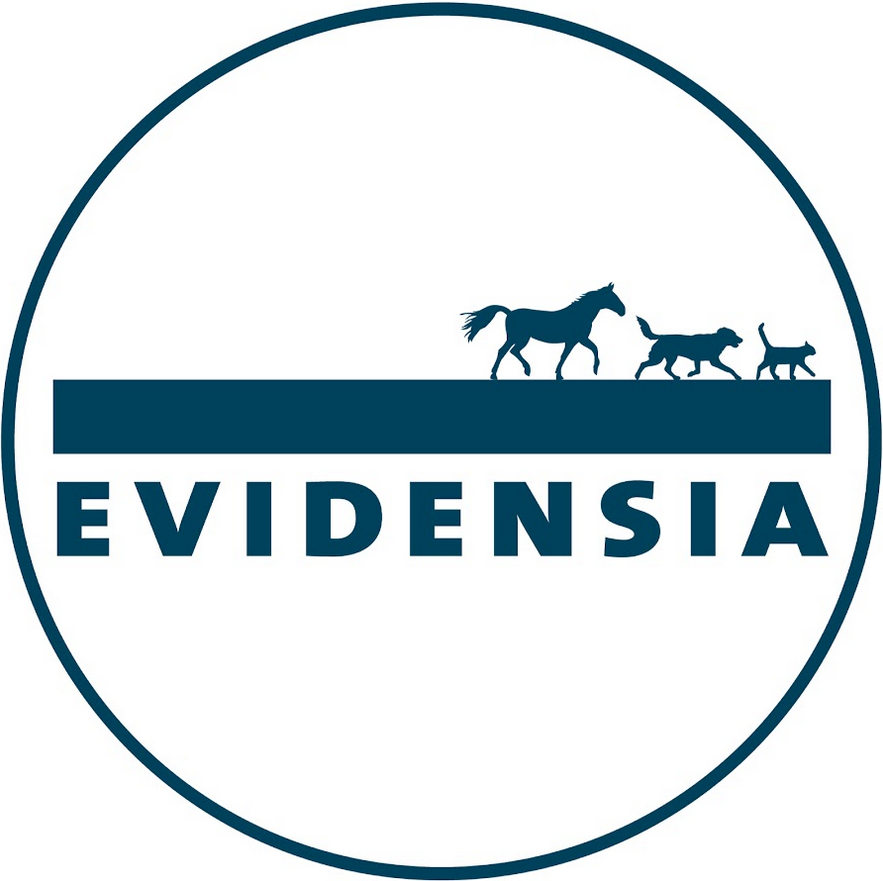Similar packages
Relaquine
Active substance
ATC code
Species
Horses.
Indications
For sedation of horses.
Dose to be administered and administration route
For oral administration.
Prefilled syringe
The veterinary medicinal product is contained within a 10 ml or 15 ml polyethylene syringe. The plunger has a locking ring which should be adjusted to provide the volume required in accordance with the dosage guidelines. 1.0 ml intervals are printed on the syringe plunger, but it is also possible to dose at 0.5 ml intervals.
Before first use of the syringe, turn the locking ring clockwise until aligned with the 0.0 ml mark (side of the ring facing the barrel). Turn the locking ring anti-clockwise will move the ring backwards. Turn the locking ring backwards until the left side of the locking ring lines up with the volume of the oral gel to be administered.
Place the syringe in the animal's mouth and expel the required dose into the cheek pouch. The gel may also be mixed with food.
Glass bottle
The veterinary medicinal product is filled into 10, 15, 20, 30 and 50 ml glass bottles with CRC closure and supplied with a 5 ml syringe with a dose graduation allowing accurate dosing of 0.1 or 0.2 ml. Withdraw the appropriate dose from the bottle using the supplied syringe. The syringe is brought into the animal's mouth and the appropriate dose is expelled into the animal's cheek. The gel may also be mixed with food.
Amount(s) to be administered
Moderate sedation: 0.15 mg acepromazine per kg bodyweight Dosage guidelines:
|
Bodyweight (kg) |
200 |
300 |
400 |
450 |
500 |
600 |
|
Dose (ml) |
1.0 |
1.5 |
1.5 |
2.0 |
2.5 |
2.5 |
The above dosage information is provided as a guideline. The dose may be varied to administer between 0.5 and 1.5 times the above recommendation depending on the level of sedation required, i.e. for mild sedation, administer half the recommended dose and for deeper sedation, administer 1½ times the recommended dose.
Adverse reactions
Horse:
|
Rare (1 to 10 animals / 10,000 animals treated): |
Excitation1 |
|
Very rare (<1 animal / 10,000 animals treated, including isolated reports): |
Low blood pressure2, Hypothermia3, Hyperthermia3 Decreased red blood cell count4, Decreased haemoglobin4, Low platelet count4, Leucopenia4 Infertility5, Penile prolapse6, Paraphimosis7, Priapism7 Aggression8, Generalized central nervous system stimulation8 Prolapse of the nictitating membrane |
1 Paradoxical reaction
2 Since acepromazine decreases sympathetic nervous system tone, a transient drop in blood pressure may occur after administration.
3 Inhibition of temperature regulation.
4 Transient.
5 Because it increases prolactin secretion, the administration of acepromazine may lead to disturbances in fertility.
6 Due to the relaxation of the retractor penis muscles. Retraction of the penis should be visible within two to three hours. If this does not take place, it is advised to contact a veterinary surgeon. Lack of retraction is of particular concern in breeding stallions.
7 Acepromazine has caused paraphimosis sometimes in sequel to priapism.8 Contradictory clinical signs
Reporting adverse events is important. It allows continuous safety monitoring of a veterinary medicinal product. Reports should be sent, preferably via a veterinarian, to either the marketing authorisation holder or its local representative or the national competent authority via the national reporting system. See the package leaflet for respective contact details.
Dispensing
POM-V - Prescription Only Medicine – VeterinarianSUMMARY OF PRODUCT CHARACTERISTICS
1. NAME OF THE VETERINARY MEDICINAL PRODUCT
Relaquine 35 mg/ml Oral Gel for Horses
2. QUALITATIVE AND QUANTITATIVE COMPOSITION
Each ml contains
Active substance
|
Acepromazine (as Acepromazine maleate Excipients: |
35.00 mg 47.50 mg) |
|
Methyl parahydroxybenzoate (E218) |
0.65 mg |
|
Propyl parahydroxybenzoate |
0.35 mg |
For the full list of excipients, see section 6.1.
3. PHARMACEUTICAL FORM
Oral gel.
Clear yellow gel for oral administration.
4. CLINICAL PARTICULARS
4.1 Target species
Horse.
4.2 Indications for use, specifying the target species
For sedation of horses.
4.3 Contraindications
Do not use in cases of post-traumatic shock or hypovolaemia.
Do not use in animals in a state of severe emotional excitation.
Do not use in animals with epilepsy.
Do not use in pregnant or lactating mares.
Do not use in animals with heart failure.
Do not use in animals with haematological disorders/coagulopathies.
Do not use in animals suffering from hypothermia.
Do not use in the case of known hypersensitivity to the active substance or any of the excipients of the product. Do not use in neonates.
4.4 Special warnings for each target species
Sedation lasts for approximately six hours, although the actual time and depth of sedation are very dependent on the status of the individual animal.
Increasing the dosage above that recommended results in prolonged action and side effects but no greater sedation.
4.5 Special precautions for use
Special precautions for use in animals
In stallions, the lowest dose range is indicated to minimise prolapse of the penis. The product should be used with caution and with reduced dosage in the case of cardiac or hepatic disease or in debilitated, hypovolemic or anaemic animals.
Acepromazine has negligible analgesic effects. Painful activities should be avoided when handling tranquillized animals.
Tranquillized horses should be kept in a calm place and sensorial stimuli should be avoided as far as possible.
Special precautions to be taken by the person administering the veterinary medicinal product to animals
Wash hands and exposed skin thoroughly after use.
Persons with sensitive skin or in continuous contact with the product are advised to wear impermeable gloves. Avoid contact with eyes.
If accidental eye contact occurs, flush gently with running water for 15 minutes and seek medical advice if any irritation persists.
In case of accidental ingestion, seek medical advice immediately and show the package leaflet or the label to the physician but, DO NOT DRIVE as sedation can occur.
4.6 Adverse reactions (frequency and seriousness)
The frequency of adverse reactions is defined using the following convention:
- very common (more than 1 in 10 animals treated displaying adverse reaction(s))
- common (more than 1 but less than 10 animals in 100 animals treated)
- uncommon (more than 1 but less than 10 animals in 1,000 animals treated)
- rare (more than 1 but less than 10 animals in 10,000 animals treated)
- very rare (less than 1 animal in 10,000 animals treated, including isolated reports).
Since acepromazine decreases sympathetic nervous system tone, a transient drop in blood pressure may occur after administration.
Inhibition of temperature regulation.
The following reversible changes are possible in the haemogram:
- transient decrease in erythrocyte count and haemoglobin concentration;- transient decrease in thrombocyte and leukocyte counts.
Because it increases prolactin secretion, the administration of acepromazine may lead to disturbances in fertility.
Penile prolapse may occur due to the relaxation of the retractor penis muscles. Retraction of the penis should be visible within two to three hours. If this does not take place, it is advised to contact a veterinary surgeon. Lack of retraction is of particular concern in breeding stallions. Acepromazine has caused paraphimosis sometimes in sequel to priaprism.
In rare cases paradoxical excitation reactions can develop.
Contradictory clinical signs of aggressiveness and generalised CNS stimulation may occur.
Prolapse of the nictitating membrane has also been cited as a possible adverse effect in horses.
4.7 Use during pregnancy, lactation or lay
Acepromazine should not be used in pregnant or lactating mares.
Acepromazine has the potential to induce hypotension in newborns when administered as a premedication for caesarean section in the mare.
Please see also Section 4.6 relating to disturbances in fertility.
4.8 Interaction with other medicinal products and other forms of interaction
Acepromazine potentiates the action of centrally depressant drugs.
Simultaneous administration, or administration to horses recently treated with organophosphates should be avoided, since these molecules enhance the toxic effects of acepromazine. Since acepromazine decreases sympathetic nervous system tone, simultaneous treatment with blood pressure lowering products should not take place. Antacids may cause a decrease in the gastrointestinal absorption of acepromazine after oral administration.
Opiates may enhance the hypotensive effects of acepromazine.
4.9 Amounts to be administered and administration route
For oral administration.
Prefilled syringe
The product is contained within a 10 ml or 15 ml polyethylene syringe. The plunger has a locking ring which should be adjusted to provide the volume required in accordance with the dosage guidelines. 1.0 ml intervals are printed on the syringe plunger, but it is also possible to dose at 0.5 ml intervals.
Before first use of the syringe, turn the locking ring clockwise until aligned with the 0.0 ml mark (side of the ring facing the barrel). Turn the locking ring anti-clockwise will move the ring backwards. Turn the locking ring backwards until the left side of the locking ring lines up with the volume of the oral gel to be administered.
Place the syringe in the animal's mouth and expel the required dose into the cheek pouch.
The gel may also be mixed with food.
Glass bottle
The product is filled into 10, 15, 20, 30 and 50 ml glass bottles with CRC closure and supplied with a 5 ml syringe with a dose graduation allowing accurate dosing of 0.1 or 0.2 ml. Withdraw the appropriate dose from the bottle using the supplied syringe. The syringe is brought into the animal's mouth and the appropriate dose is expelled into the animal's cheek.
The gel may also be mixed with food.
Amount(s) to be administered
Moderate sedation: 0.15 mg acepromazine per kg bodyweight Dosage guidelines:
|
Bodyweight (kg) |
200 |
300 |
400 |
450 |
500 |
600 |
|
Dose (ml) |
1.0 |
1.5 |
1.5 |
2.0 |
2.5 |
2.5 |
The above dosage information is provided as a guideline. The dose may be varied to administer between 0.5 and 1.5 times the above recommendation depending on the level of sedation required, i.e. for mild sedation, administer half the recommended dose and for deeper sedation, administer 1½ times the recommended dose.
4.10 Overdose (symptoms, emergency procedures, antidotes), if necessary
Overdosage results in an earlier onset of the sedative symptoms and in a prolonged effect. Toxic effects are ataxia, hypotension, hypothermia and central nervous system (extrapyramidal) effects.
Noradrenaline, but not adrenaline, can be used to counteract the cardiovascular effects.
4.11 Withdrawal period(s)
Not authorised for use in horses intended for human consumption.
5. PHARMACOLOGICAL PROPERTIES
Pharmacotherapeutic group: Nervous System. ATC vet code: QN05AA04.
5.1 Pharmacodynamic properties
Acepromazine is a phenothiazine derivative. This group of molecules belongs to the neuroleptics: they depress the central nervous system and exert associated effects on the autonomic system. These effects are due to their interference with different neurotransmitter receptors (dopaminergic, adrenergic) and to their interference with hypothalamic performance. The sedative activity starts within 15 to 30 minutes of treatment and lasts for 6 -7 hours.
The desired effects observed after treatment with acepromazine include a general tranquillizing effect, anti-emetic effect and a slight anti-histaminic effect. There is no analgesic action. The neuroleptic effects are variable between individual animals.
5.2 Pharmacokinetic particulars
Acepromazine is partly absorbed from the gastrointestinal tract. Plasma protein binding is high and it is extensively distributed throughout the body tissues. Plasma levels are usually low. Acepromazine is highly metabolised, with the urine as the main route of excretion.
6. PHARMACEUTICAL PARTICULARS
6.1 List of excipients
Methyl parahydroxybenzoate (E218)
Propyl parahydroxybenzoate
Sodium acetate trihydrate
Sodium cyclamate (E952)
Hydroxyethylcellulose
Glycerol (E422)
Purified water
6.2 Major incompatibilities
In the absence of compatibility studies, this veterinary medicinal product must not be mixed with other veterinary medicinal products.
6.3 Shelf life
Shelf life of the veterinary medicinal product as packaged for sale: 2 years
Shelf life after first opening the immediate packaging: 90 days
6.4 Special precautions for storage
Do not store above 25°C.
Protect from frost.
Protect from light.
After use, replace cap on syringe. Keep the broached syringe in the original carton and store in a dry place.
6.5 Nature and composition of immediate packaging
Prefilled syringes:
Container: White, high-density polyethylene syringe barrel and a white, low-density polyethylene syringe plunger closed with a white, high-density polyethylene, push-fit cap.
Or
White, linear low-density polyethylene syringe closed with a linear low-density polyethylene, push-fit cap.
|
Fill volume: |
10 ml 15 ml |
|
Dosing device: Glass bottles |
The product is presented in an oral dosing syringe which is graduated at 1ml intervals. |
|
Container: |
Amber Type III glass bottles of 10, 15, 20, 30 and 50 ml, fitted with syringe adaptors and HDPE/LDPE CRC closures containing 9 ml, 14 ml, 18 ml, 28 ml and 48 ml product, respectively. |
|
Dosing device: |
The product is presented with an oral dosing syringe of 5 ml which is |
graduated at 0.1 or 0.2 ml intervals.
Not all pack sizes may be marketed.
6.6 Special precautions for the disposal of unused veterinary medicinal product or waste materials derived from the use of such products
Any unused veterinary medicinal product or waste materials derived from such veterinary medicinal product should be disposed of in accordance with local requirements.
7. MARKETING AUTHORISATION HOLDER
Floris Holding BV
Kempenlandstraat 33 / 35
5262 GK Vught
The Netherlands
8. MARKETING AUTHORISATION NUMBER
Vm 56190/5001
9. DATE OF FIRST AUTHORISATION
10 March 2011
10. DATE OF REVISION OF THE TEXT
October 2023

Approved: 19 October 2023

| Art. Nr. | 56190/5001 |
|---|---|
| EAN | 8714225153626 |
 TRUSTED SOURCE
TRUSTED SOURCE








